All photos ©Kirsty Hughes
The small ferry leaves the isle of Canna on a beautiful, calm summer’s day under a blue sky streaked with tendrils of high white cloud. The sort of day that leaves you wanting the ferry just to keep on going as views of the western side of Rum give way to the isle of Eigg to the southeast, Muck to the south, glimpses of Skye behind Eigg, the mainland beyond Muck.
A puffin flies inelegantly across the bow of the ferry as we leave Canna. Nearer Muck, a black fin emerges from the water and is gone again – a minke whale says a man with binoculars standing near me.
The ferry manoeuvres into Muck’s pier; lazing seals are balancing on the rocks or chilling out half in and half out of the water.
Another half hour and we’re at Eigg – I’m the only person leaving the ferry as it heads on to Mallaig. A wave washes onto the ramp bringing a jelly fish with it, and I’m told to wait as the ramp is moved nearer in.
Eigg is community-owned, around 110 people live here on this small but incredibly varied island, just over five miles long and three miles wide. I’m staying in one of the camping pods (a community-owned social enterprise) overlooking the harbour. Unlike on Canna, there’s electricity in my pod so I have light and a kettle, luxury indeed.
Sitting outside, there are endless, changing views to the mainland, sometimes disappearing into rain and mist, or emerging back again for cloudy, pink-edged sunsets.
There are two oystercatchers nesting somewhere in the large boulders that make up the long pier. And ducks with their ducklings swim in the sea, just below the pods, or walk when they find the tide has gone out so far that’s the only option.
I head to the café-restaurant to eat. It’s Saturday night and there’s a lively atmosphere, locals and visitors congregating inside and out, keeping an eye out for a glimpse of the otters that often swim past the rocks below. Later, I’m lucky, catching a glimpse of three heads and a tail or two.
In the morning, it’s grey and chilly. I decide to postpone climbing An Sgùrr, Eigg’s most dramatic feature. I head instead along the island’s west coast to the two abandoned townships of Lower and Upper Grulin (Lower Grulin further along the coast and higher up than Upper Grulin).
I pass Eigg’s wind turbines and on along the grassy slopes beneath An Sgùrr. There are wild flowers, especially purple foxgloves, lambs, birdsong, and no-one around until I meet one woman walking with her puppy. The two Grulin settlements were forcibly cleared in the mid-nineteenth century when the land was taken over by a borders sheep farmer. Almost all the population went to Nova Scotia, their crofts and rich farming land taken from them.
There’s a lot of ruins, substantial walls forming squares or rectangles, stone doorways, the once-indoors now full of tall grasses and foxgloves. These were significant communities. There are views back to Ardnamurchan and the mainland and across to Muck. Yet on a quiet day, the sea calm, it’s somehow peaceful more than melancholy as I sit looking at the view, wondering what it was like to live here two hundred years ago.
Later, when I’m looking around the ruins of Upper Grulin, the woman I passed earlier invites me into the bothy that was once her father’s – currently without electricity and running water. She, somehow, rustles up herb tea and we share one almond croissant from Mallaig’s wonderful bakery, generosity indeed.
Later, back at my pod, I have to improvise on dinner. The café and shop are shut on Sundays and I don’t have any cooking gear. But my kettle means I can have soup, noodles, helped along with a glass of wine from the little fridge (which only comes on if Eigg’s wind, sun and water power is producing excess electricity).
A swirling cloudy sunset washes away my thoughts of never eating pot noodles again.
The next morning it’s grey, there’s cloud periodically covering up An Sgùrr. But I decide to go with the weather forecast and head off in the hope of getting up there before the rain. It’s not a long climb but I keep stopping for the beautiful views behind me as I get higher, as white sheets of rain push across the sea revealing and covering different parts of the distant mainland mountains beyond.
An Sgùrr’s vertical face, volcanic pitchstone, that rises above the harbour looks impregnable. But the simpler walking route takes me up and round along a boggy track until the path heads upwards onto the long, sloping but rocky climb along the back of An Sgùrr to the top.
As I clamber upwards, the rain clouds sweep in. There are glimpses of Muck, then more white sheets of rain.
I can still see the path so I decide to keep going. At the top, there’s only cloud, no views but I’ve made it. And as I come down off the Sgùrr, the weather relents, beautiful views across rocks, a lochan and on to Rum.
I pass several people heading up, as I walk down, An Sgùrr now fully clear of cloud. They will get the view. As I walk, a large brown bird swoops down low above the ground through a sloping glen falling away beneath me to the sea. The next pair of walkers tell me it was one of a pair of owls. Further down, I hear a cuckoo.
And there are more birds, orchids and seals later when I discover the Scottish wildlife trust Eigg is running a wildlife walk along the seafront, first passing old boats at the old pier.
As the walk ends, the friendly, knowledgeable woman leading it points out remnants of ancient temperate rainforest, hazel woods, tumbling down below the basalt cliffs above the bay.
She gives me directions to find the path and soon I’m walking down past moss-covered stones and trees, more foxgloves, views across to the mainland. One more beautiful, intriguing part of the isle of Eigg.
The next day, I move to Cleadale at the northern end of Eigg. I’m staying below the cliffs of Beinn Buidhne, and just up the lane from the ever-changing, stunningly beautiful Laig beach.
Laig beach never once seems to look the same, shape-shifting as light, clouds and tides change. It’s vast, waves rolling in and out over its white sands streaked black with basalt.
Sometimes it’s like a silvery mirror reflecting Rum’s mountain peaks onto the wet sands; other times, its pure white sand stretches out smoothly back towards An Sgùrr. Or it’s the seaweed greens and russet and blacks of the rocks and cliffs at the northern end of the beach that draw the eye out to Rum on the horizon.
Rum’s mountains move in and out of cloud, changing colour in the morning light, or offering a sharp, black profile as the evening sun sets behind it. Hundreds of rabbits live in warrens at the edge of the beach.
A morning or evening walk down the track to the beach will be shared with sheep, rabbits, maybe cows, then oystercatchers and seagulls on the beach. Once, I glimpse a sea eagle overhead – though I don’t spot the golden eagles nesting in the cliffs above where I’m staying.
My last day, I walk to the end of the main track through Cleadale. First, to the small crofting museum that is set in an old black house, Tigh Iain Dhonnchaidh (John Campbell's house) showing life as it was lived decades ago. There are old stone hot water bottles that are the same as my granny in Edinburgh had (always hot but the stone spout sticking out ensured they were never comfy).
A rusty tractor sits outside, hens wander around. Further on down the road, there are the ruined walls of old buildings and houses. So many layers and lives, threads to follow.
In the evening, the rain suddenly pours down, no sunset pictures tonight, even the headland has disappeared into mist.
The next morning, in the dawn light of midsummer’s day, the rain stops and I glimpse, from my window, a hint of pink on the clouds and the bay. Another change of mood and light, a welcome to the summer solstice.
It’s time to go. And yet I’m only beginning to get to know Eigg – and the other Small Isles. And I will be back.


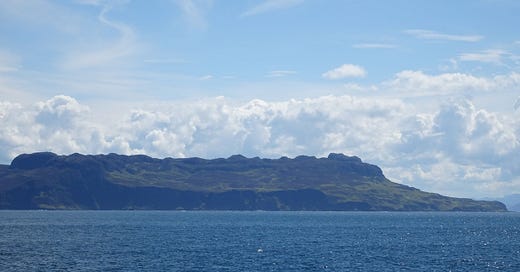



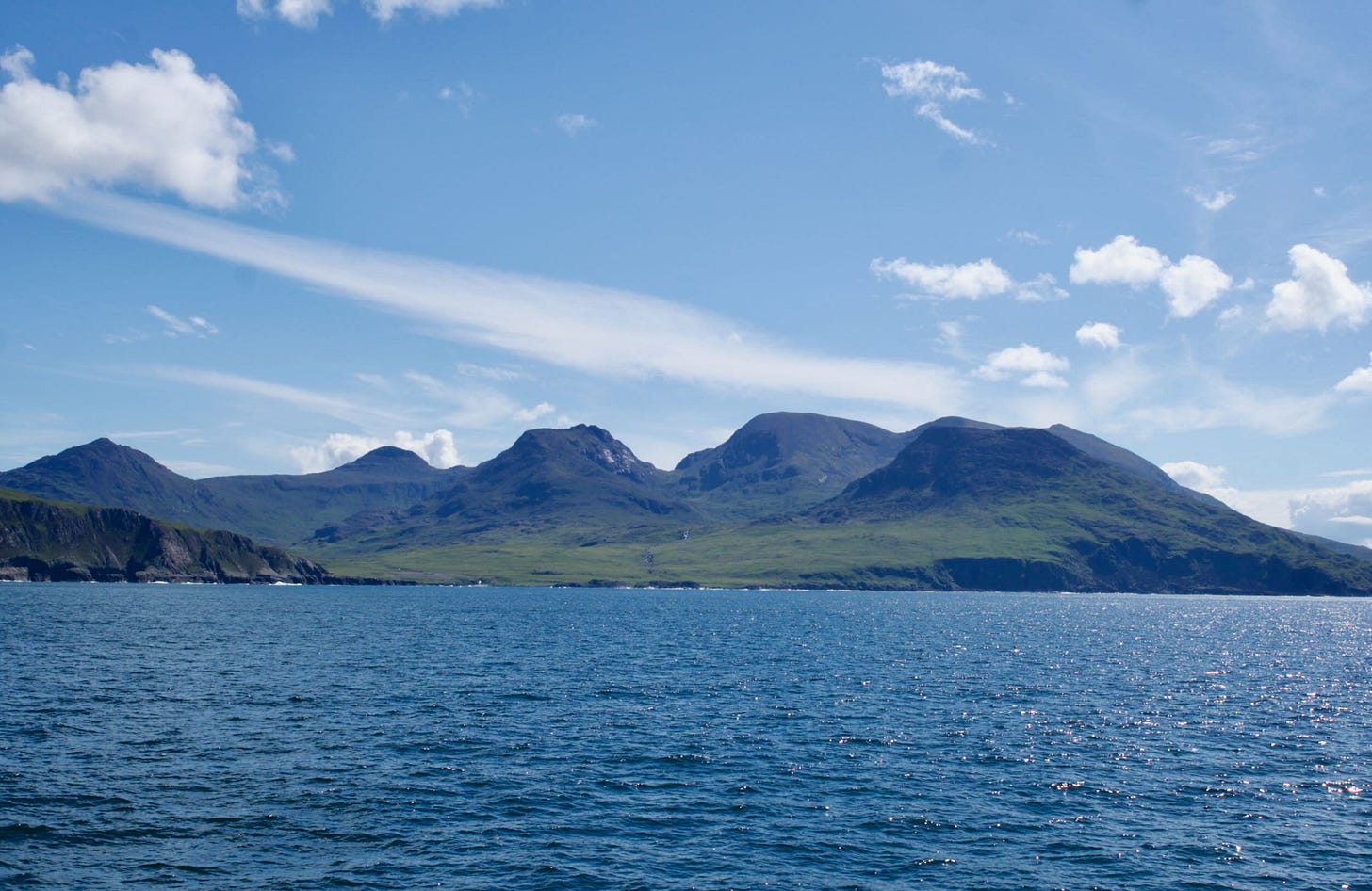
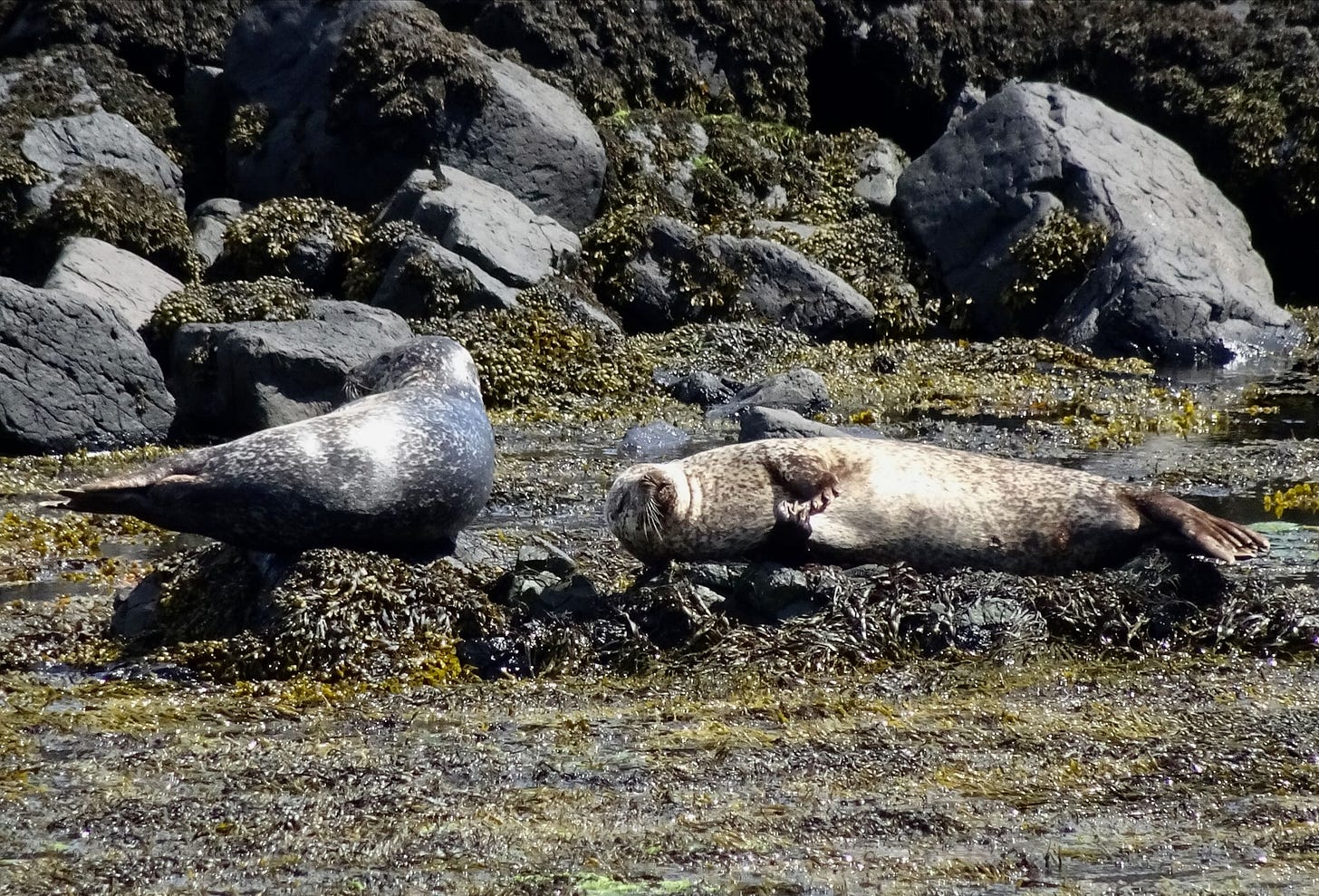
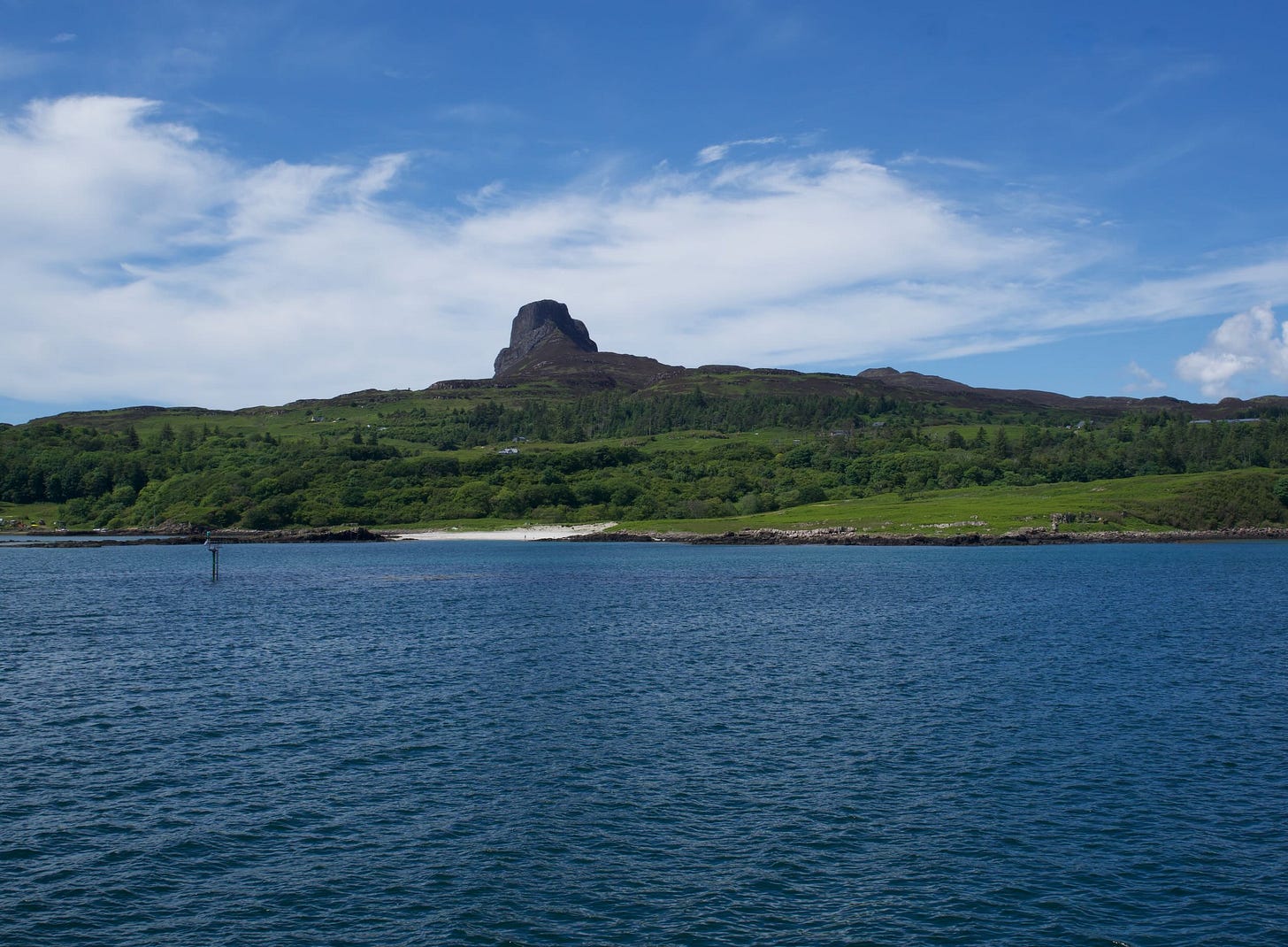
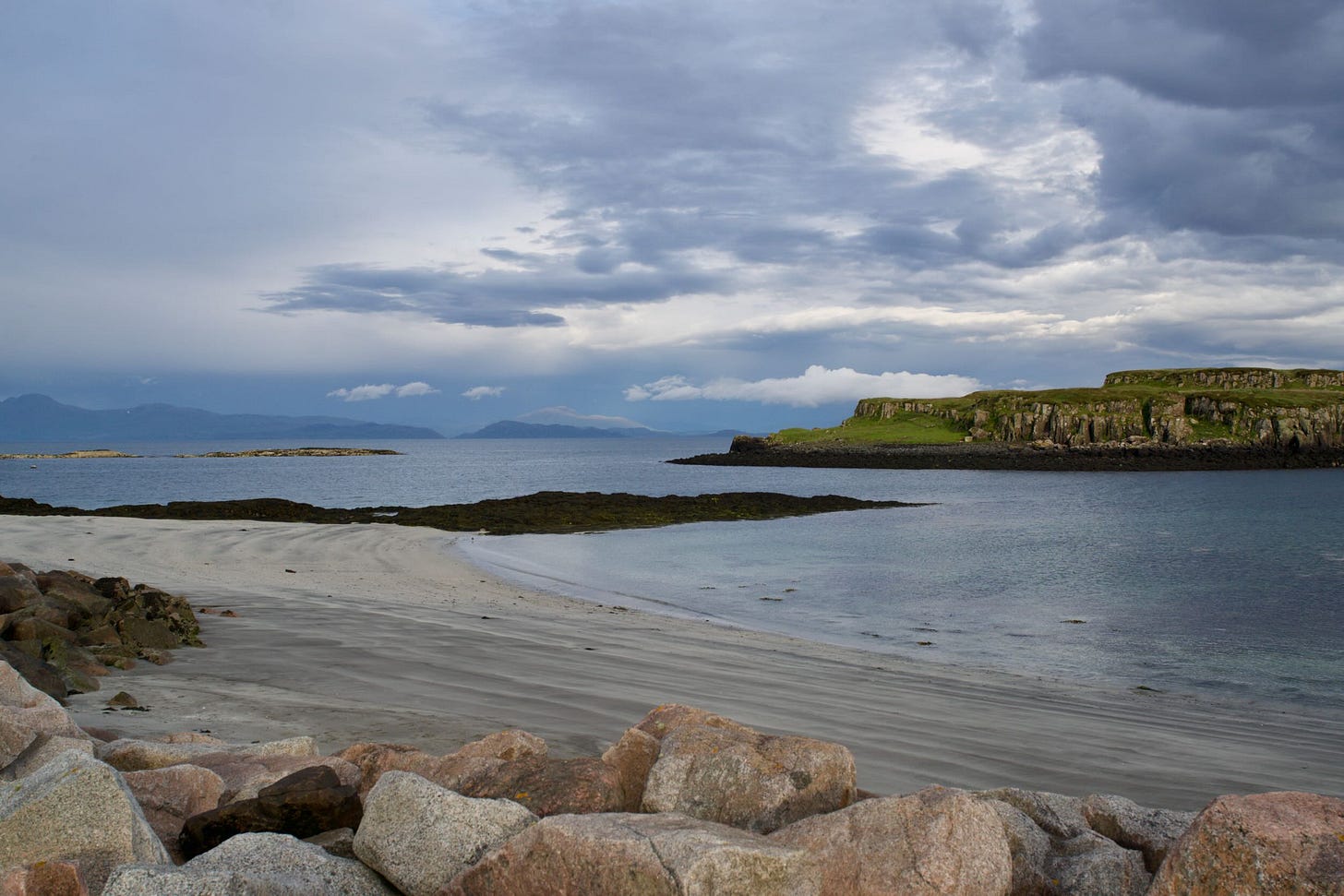
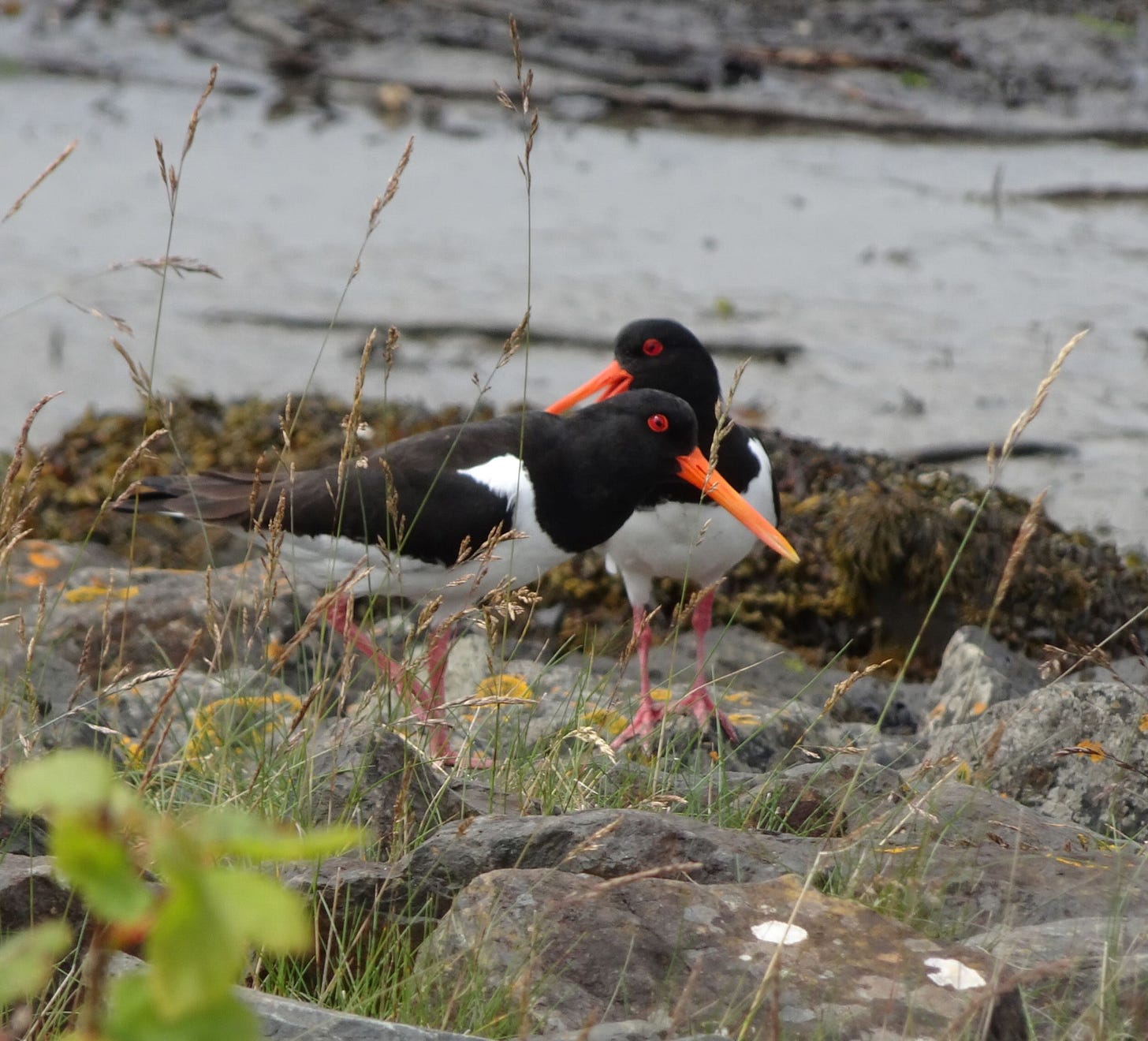
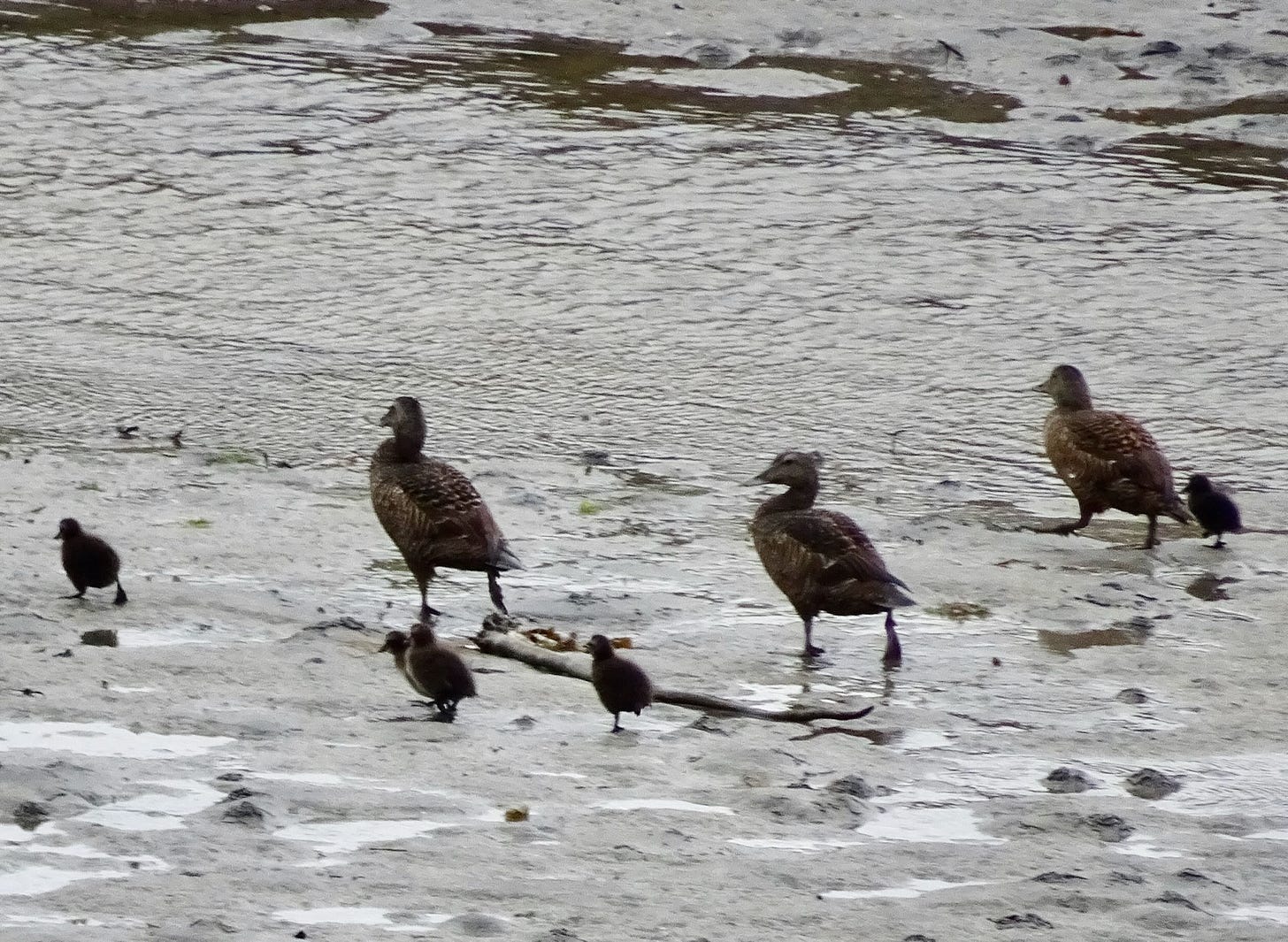
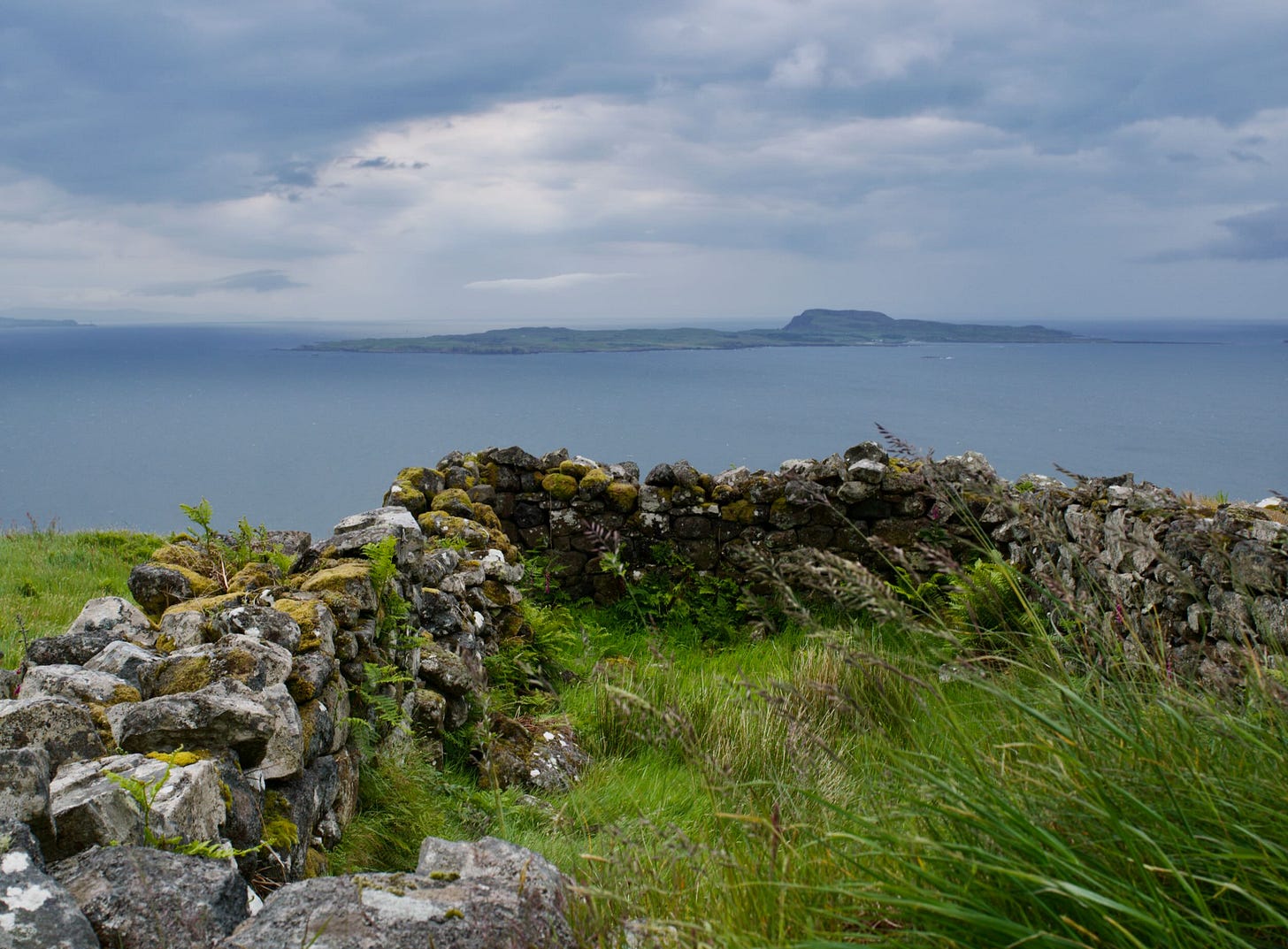
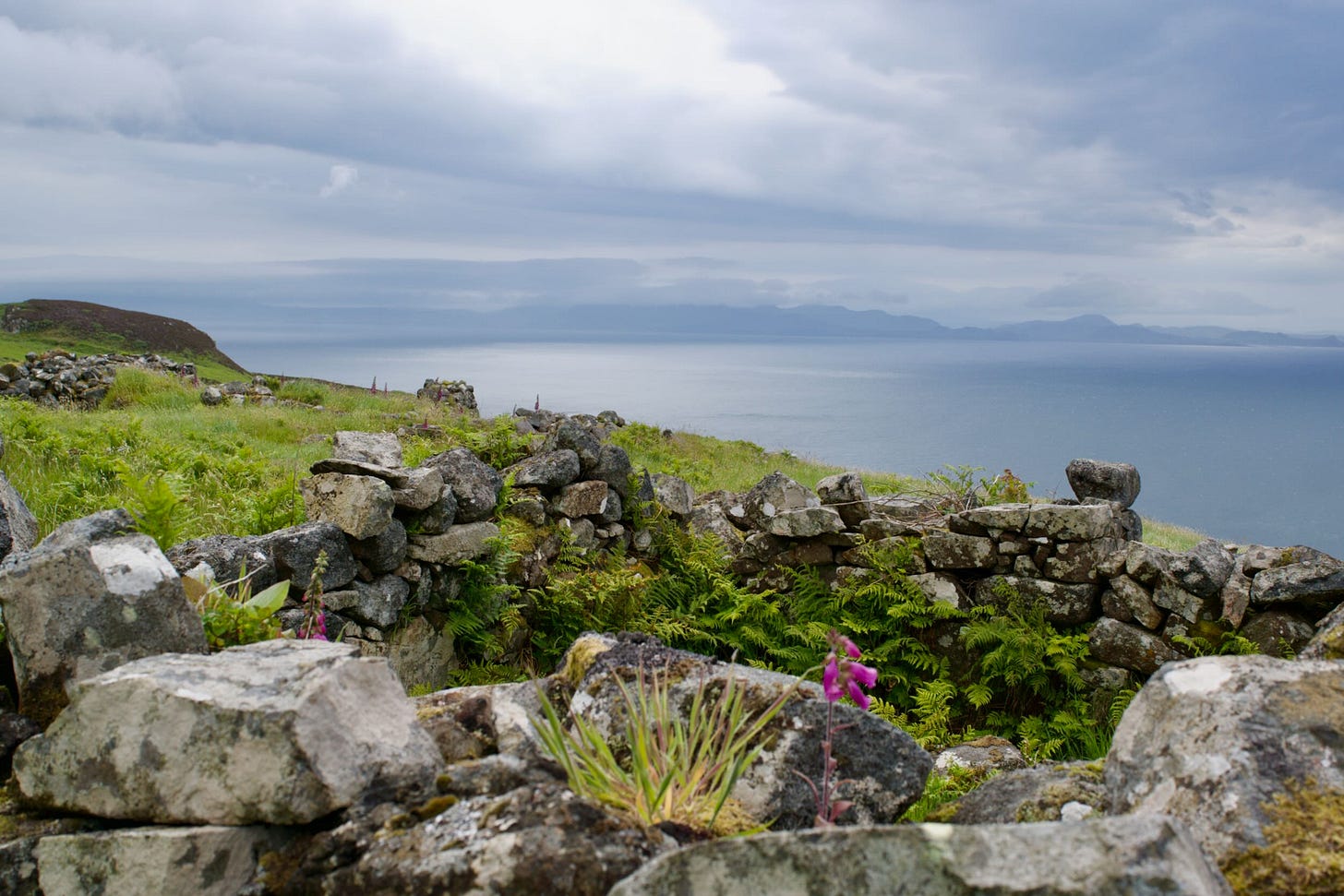
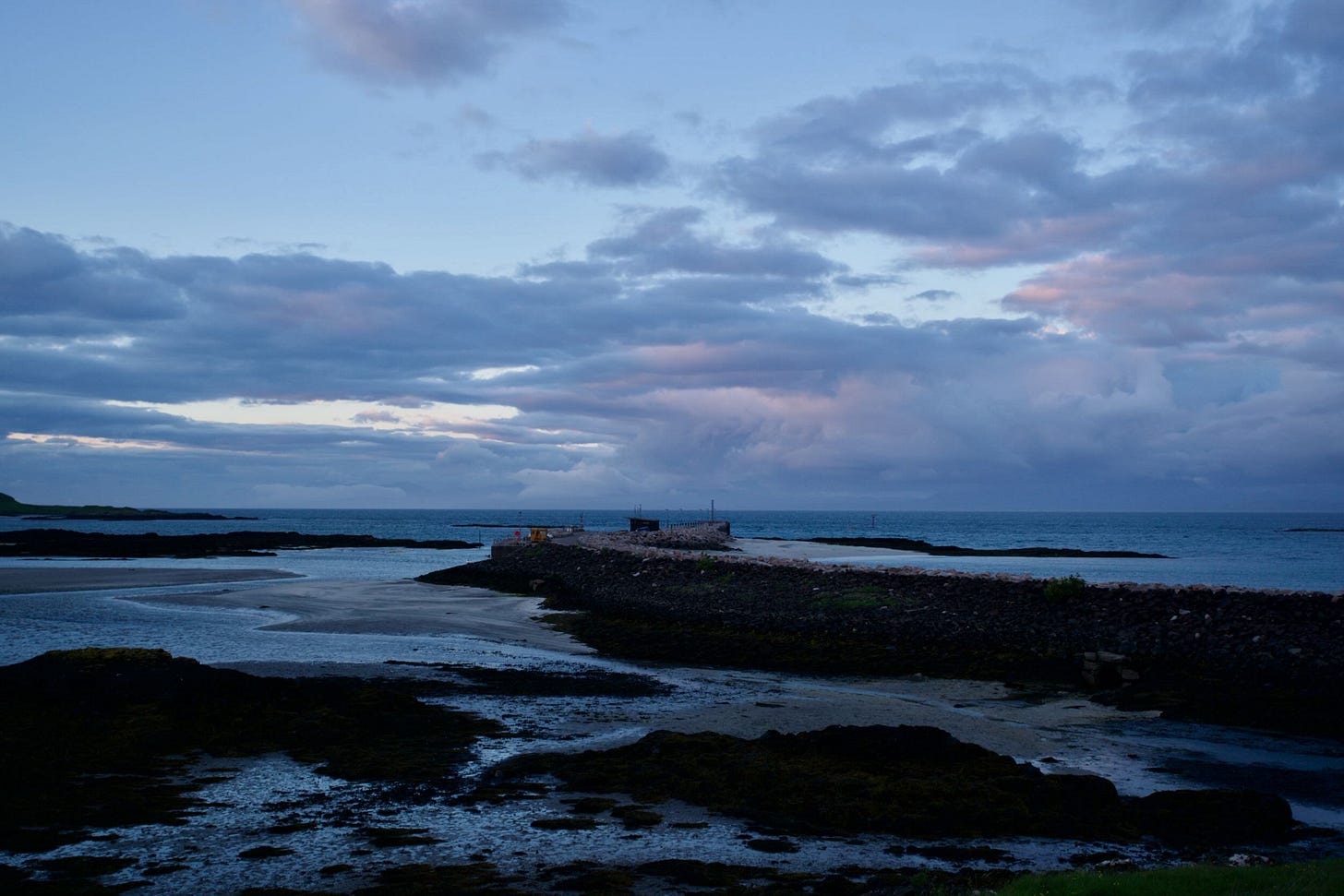
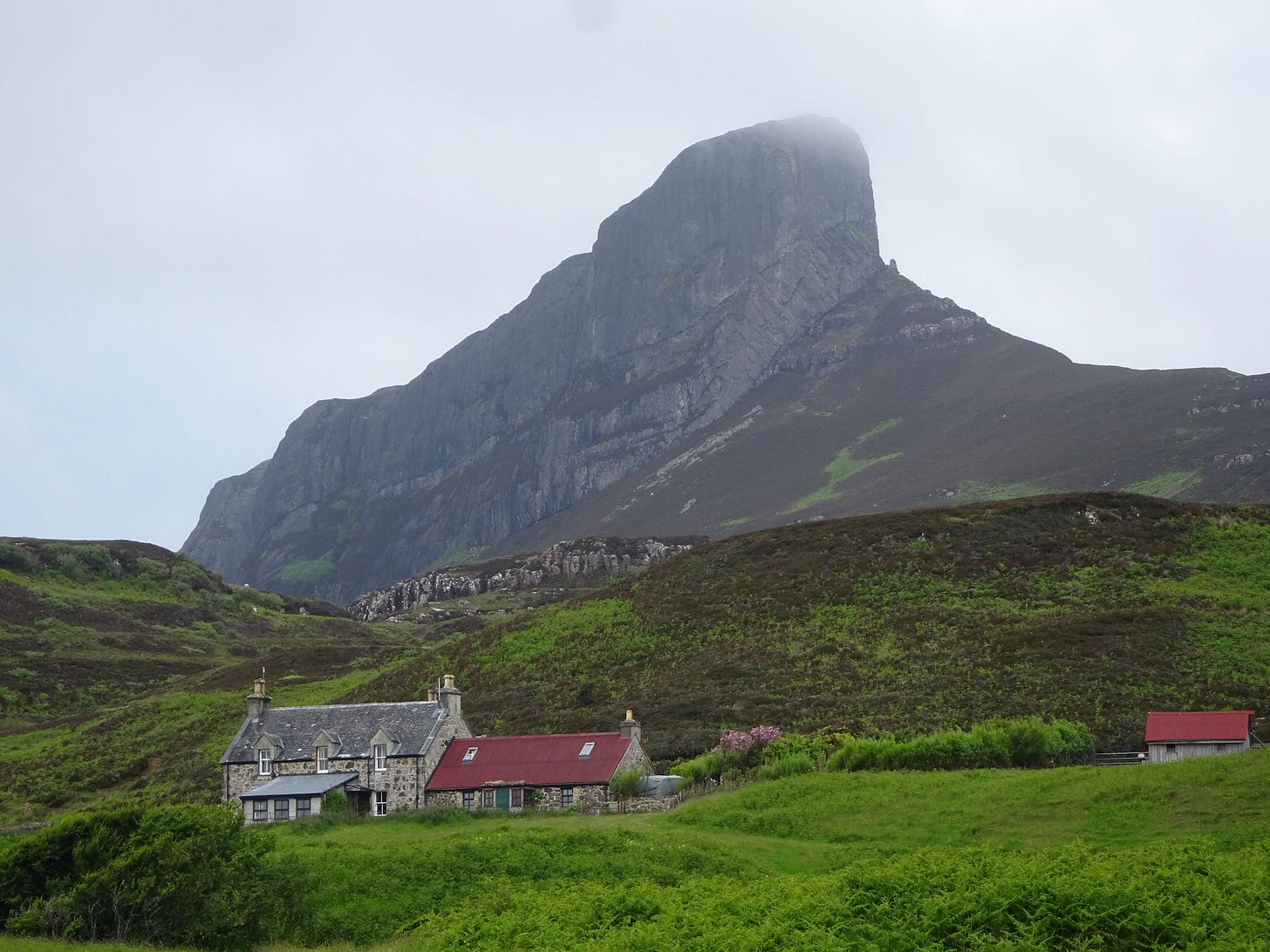
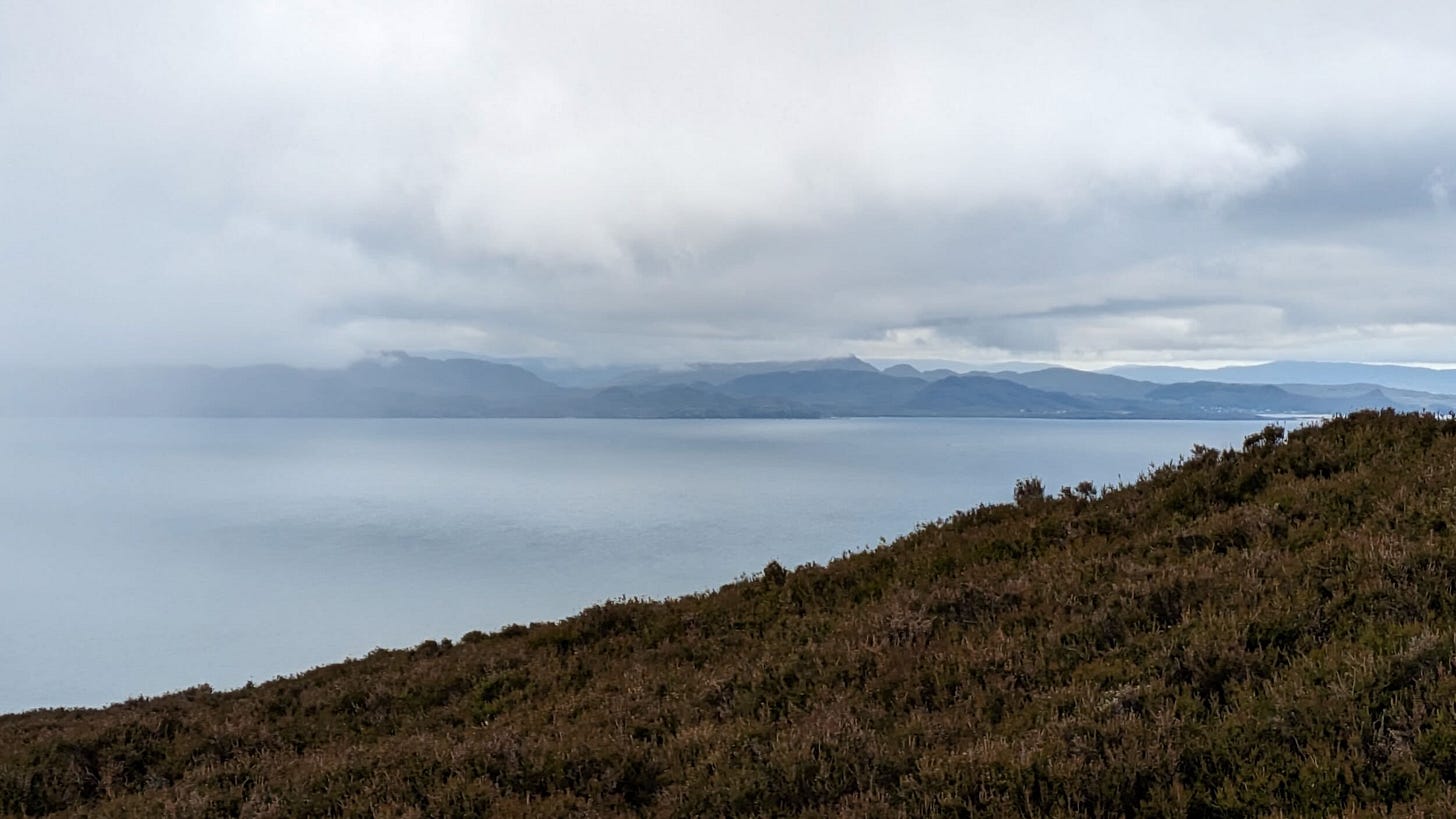



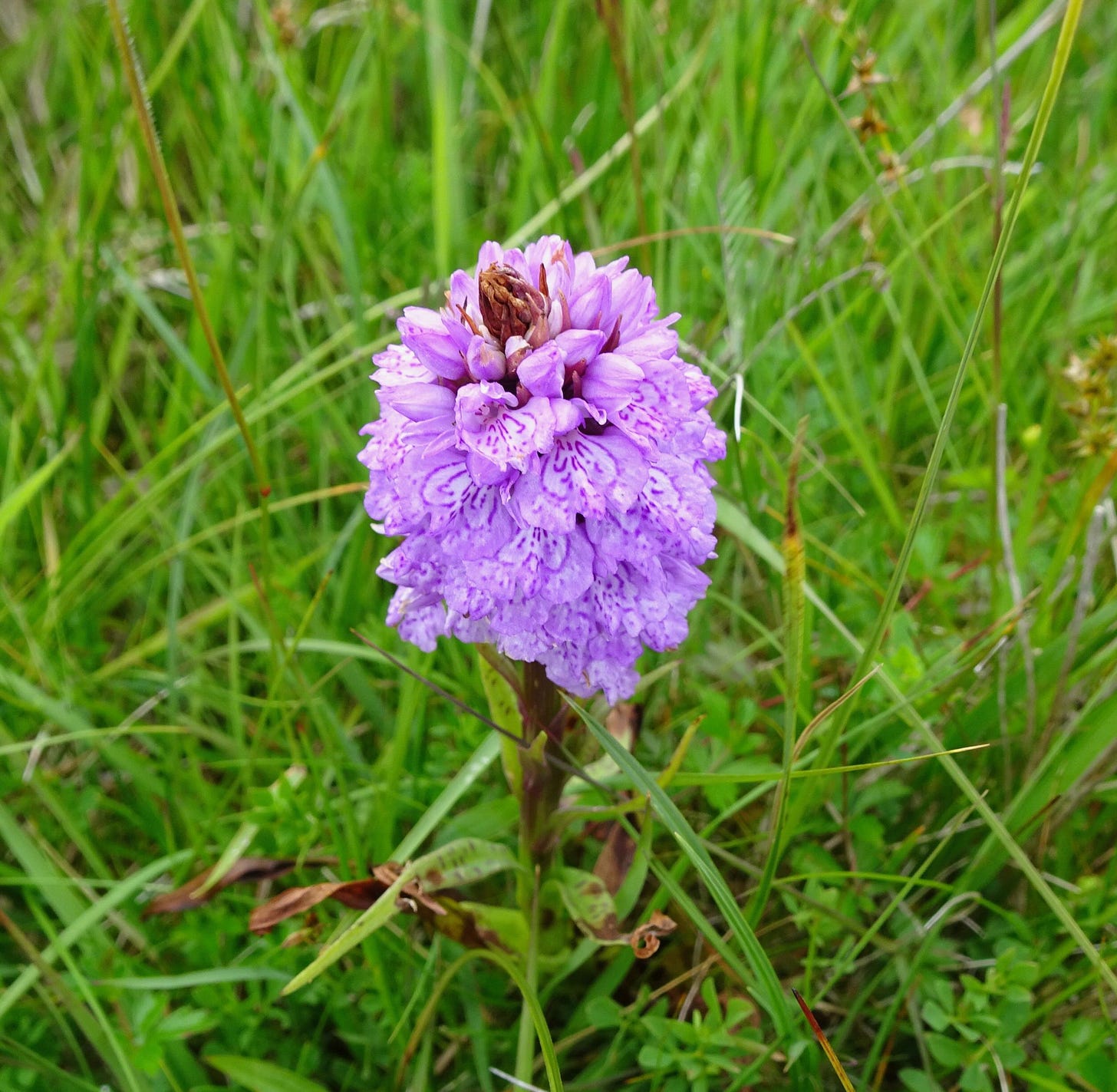
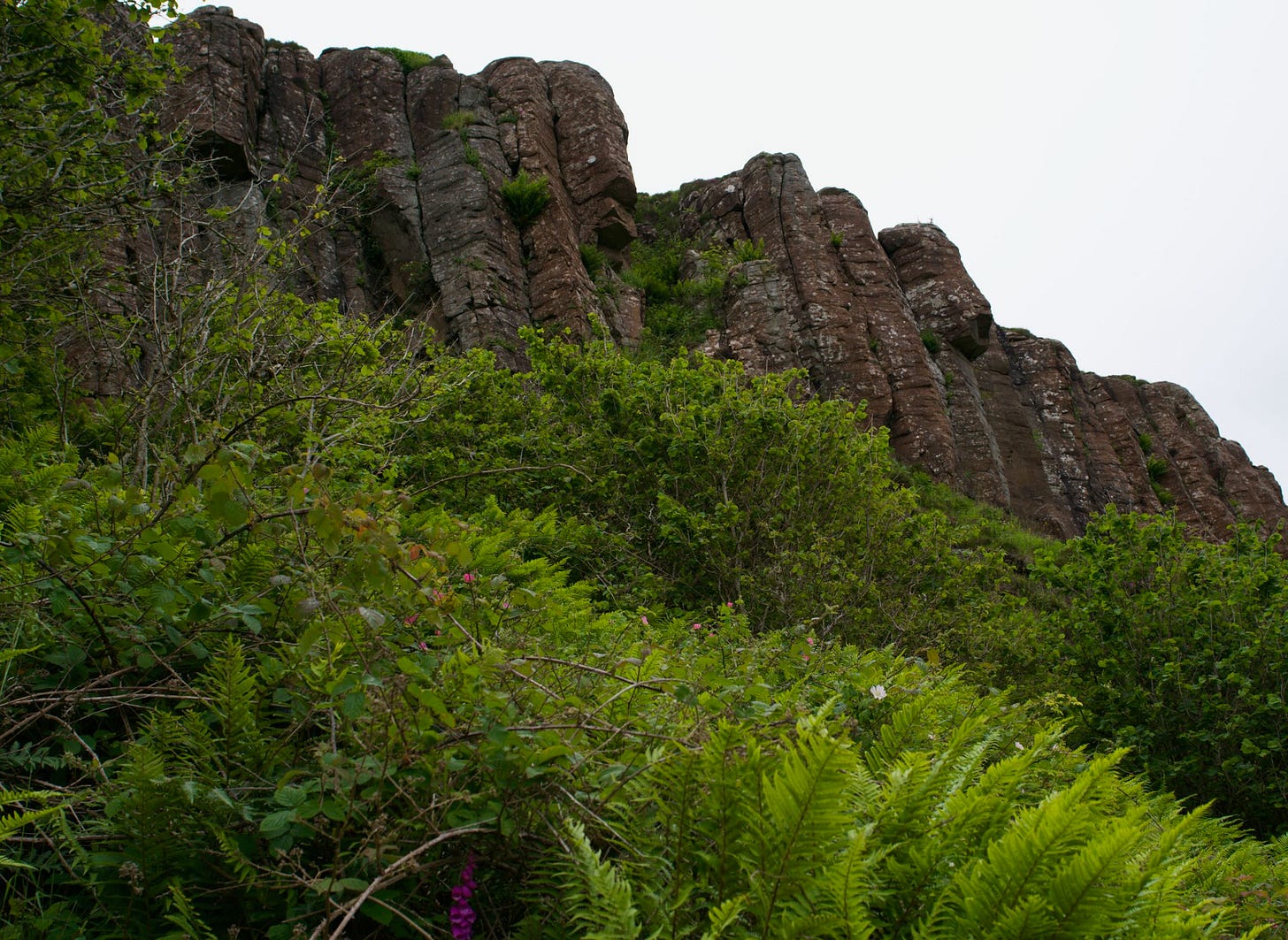
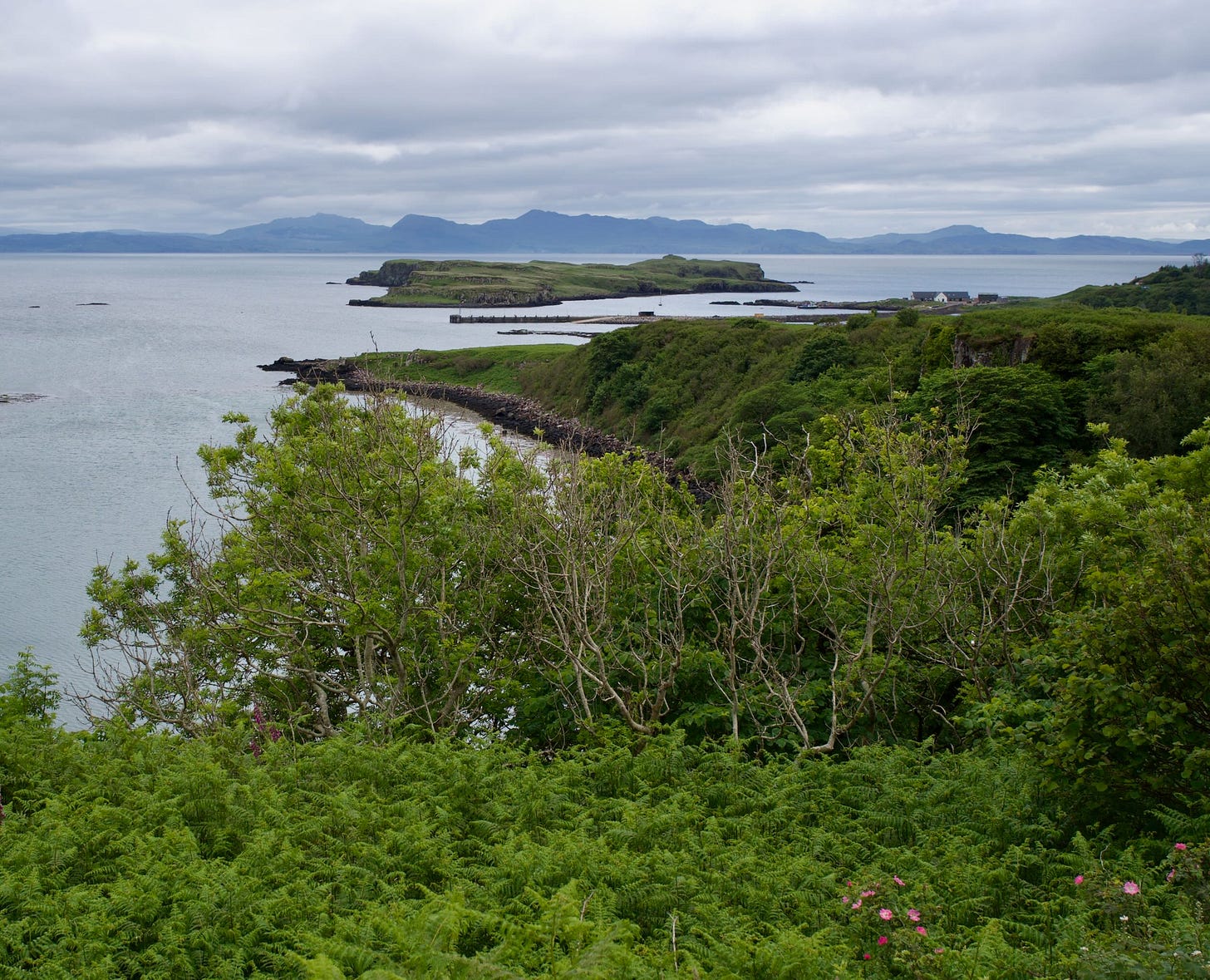
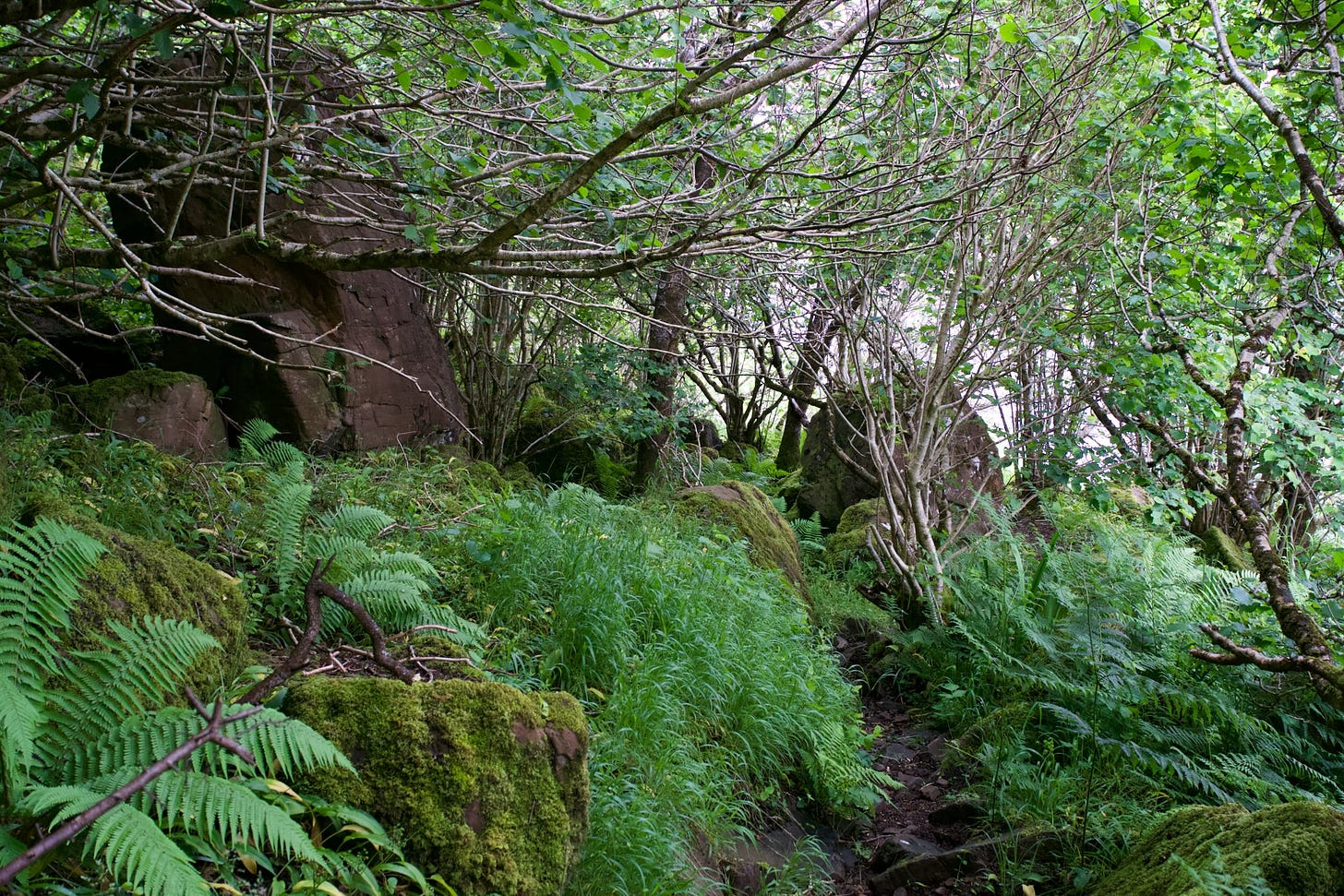
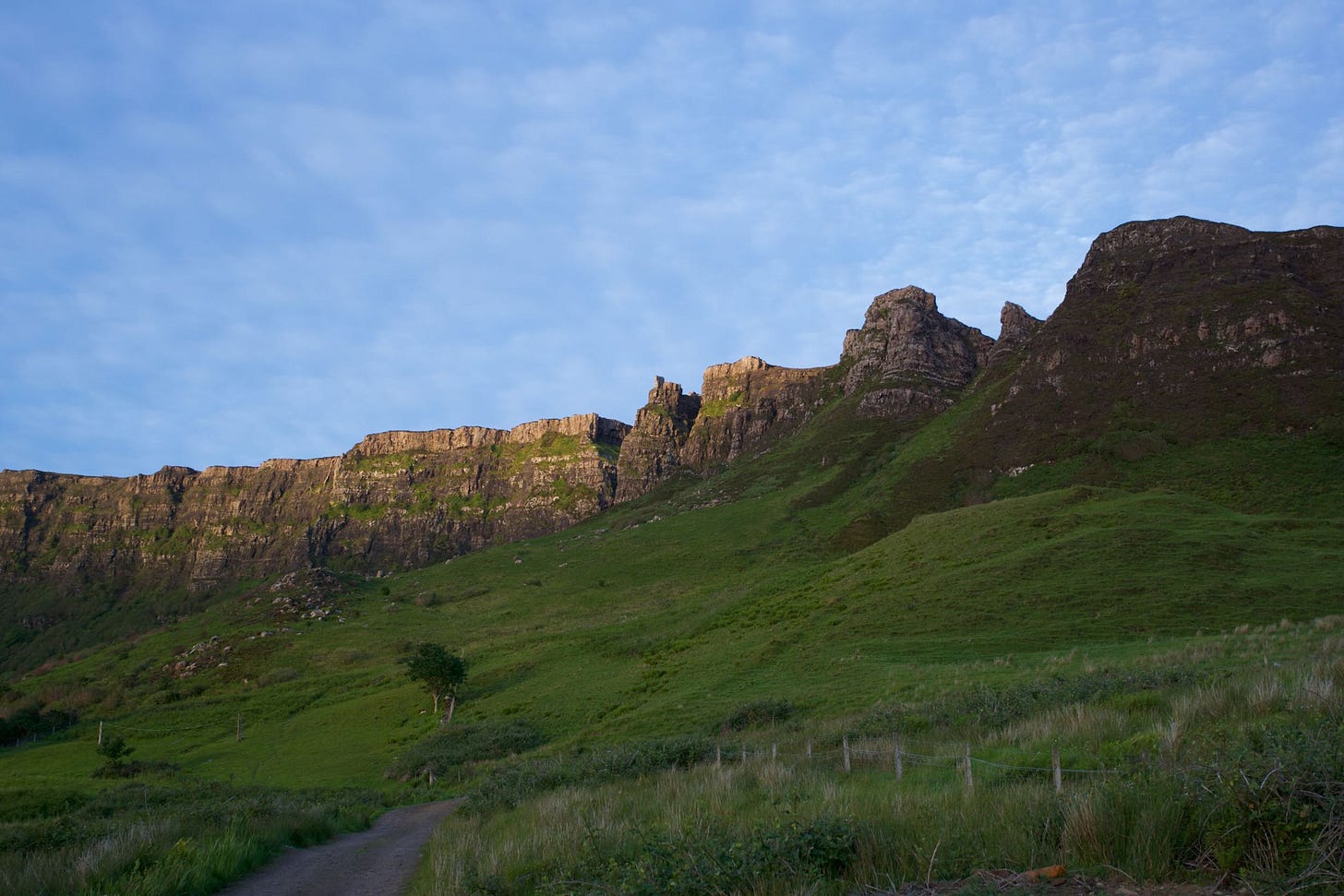
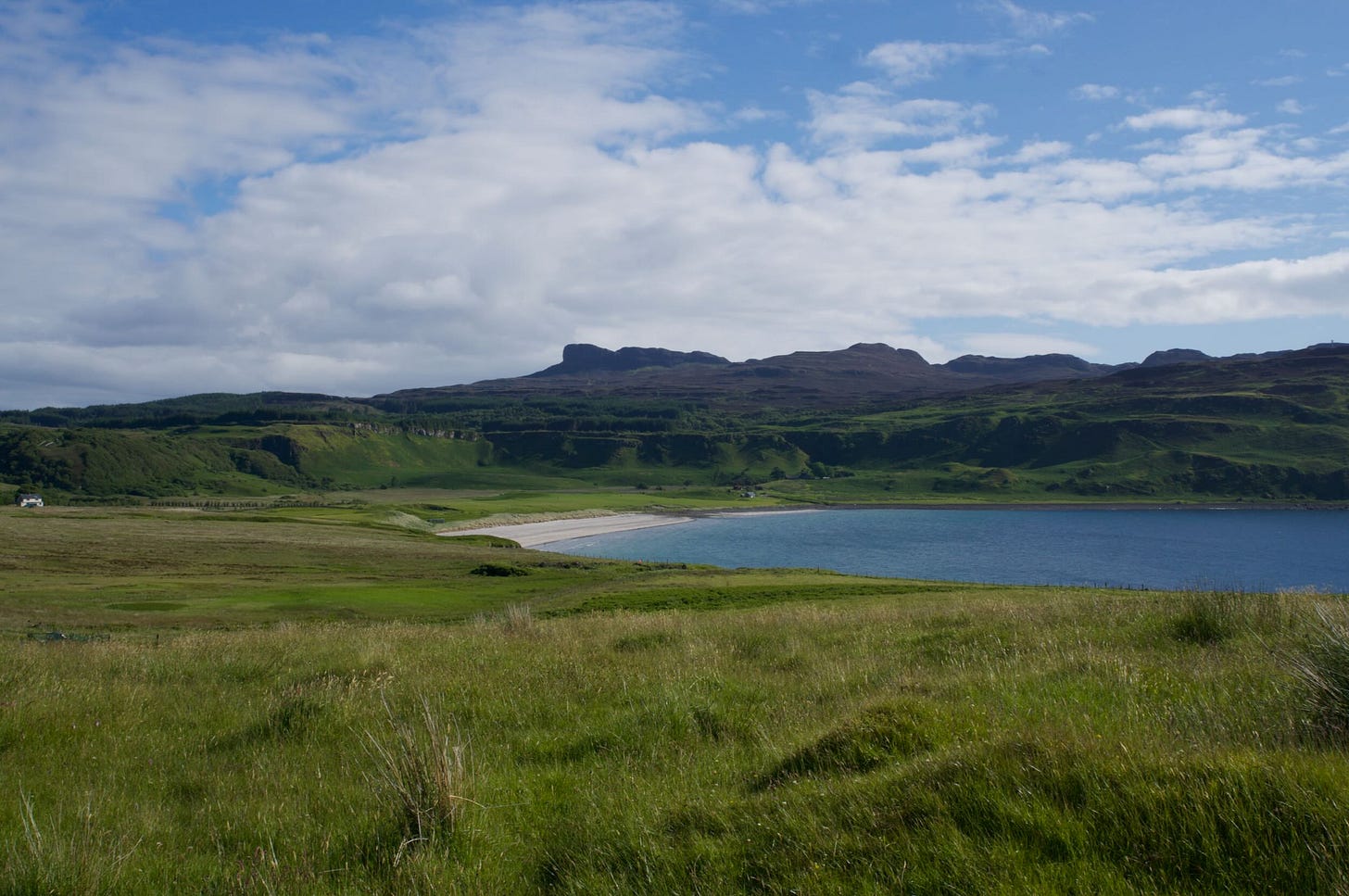
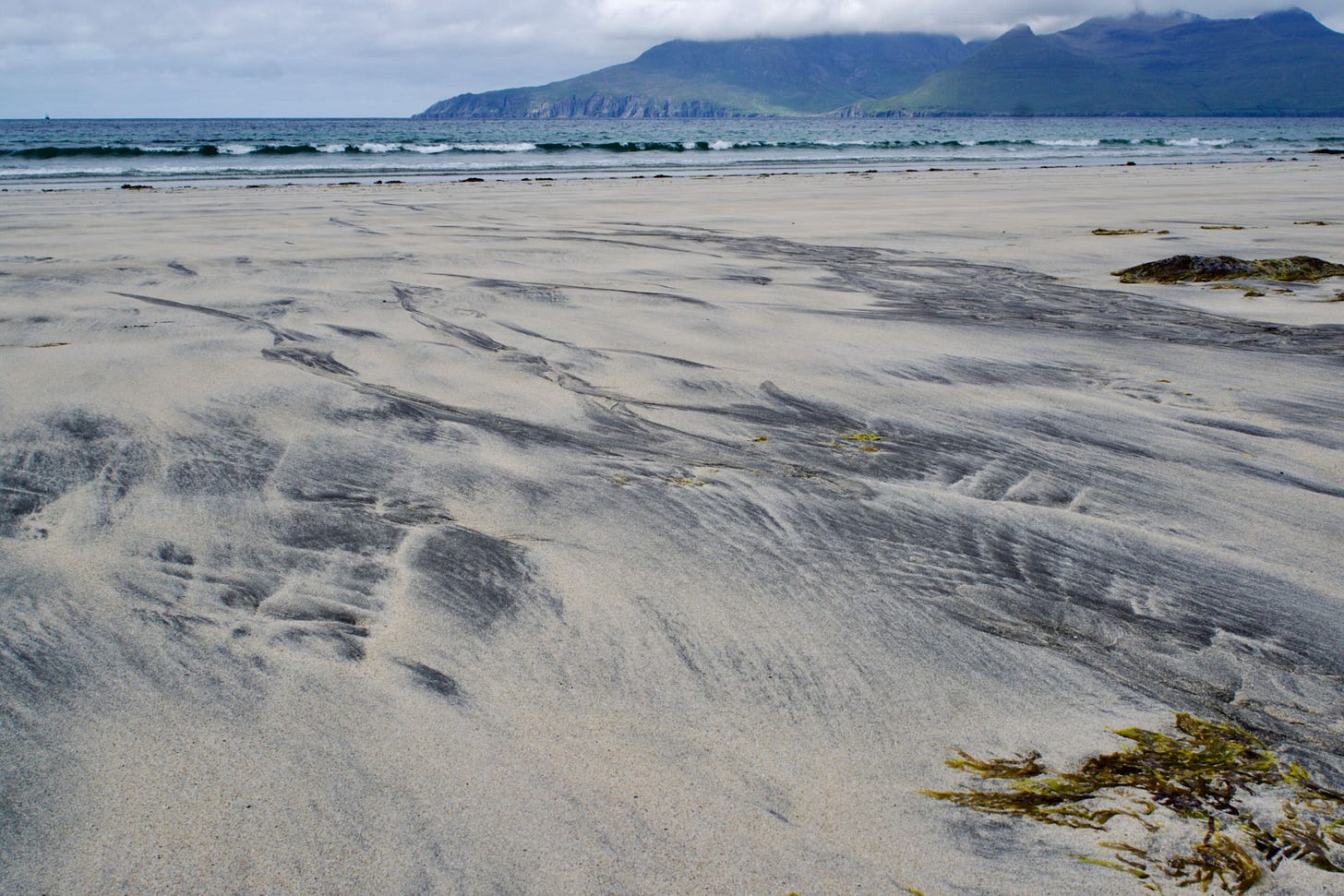
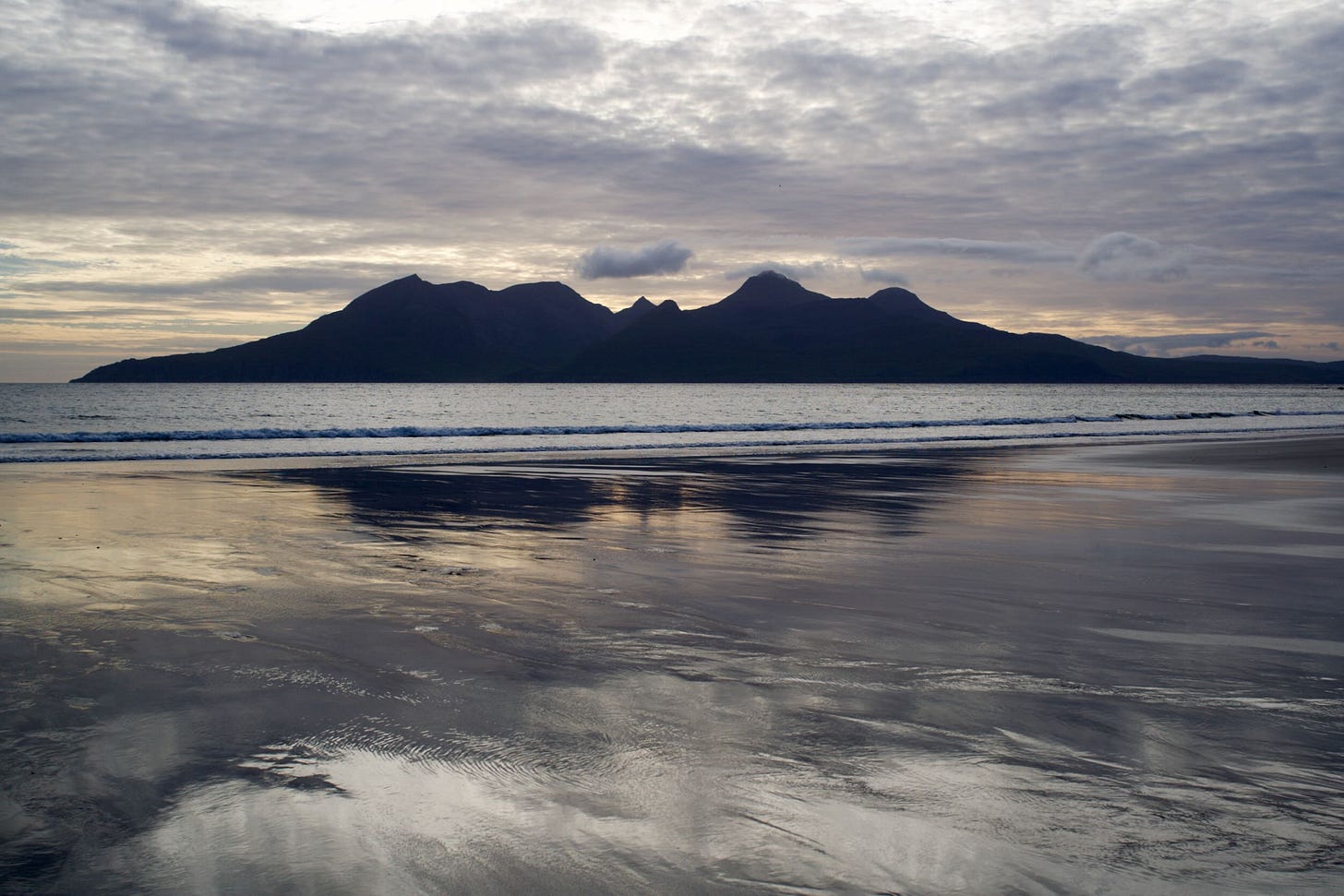
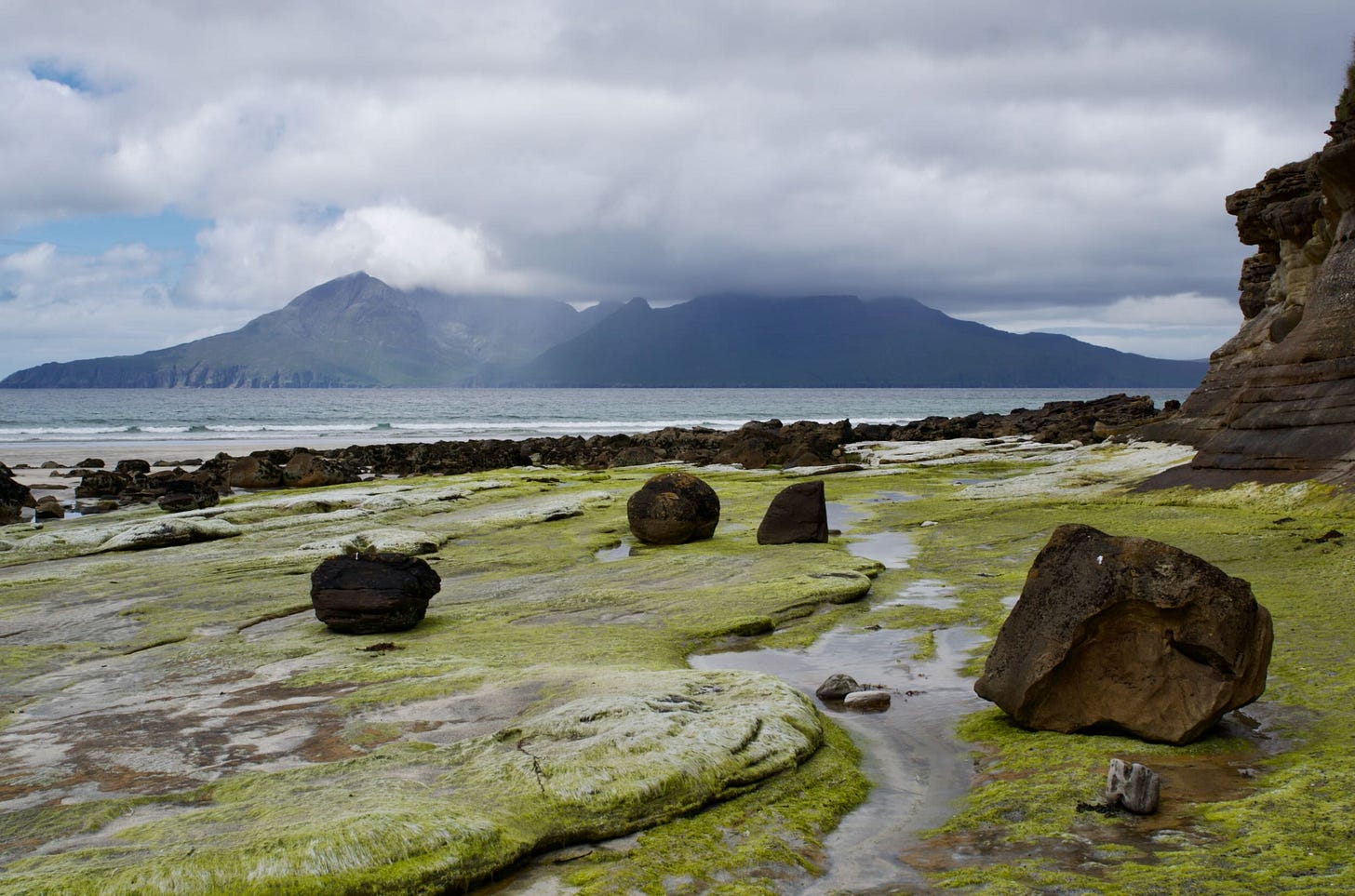
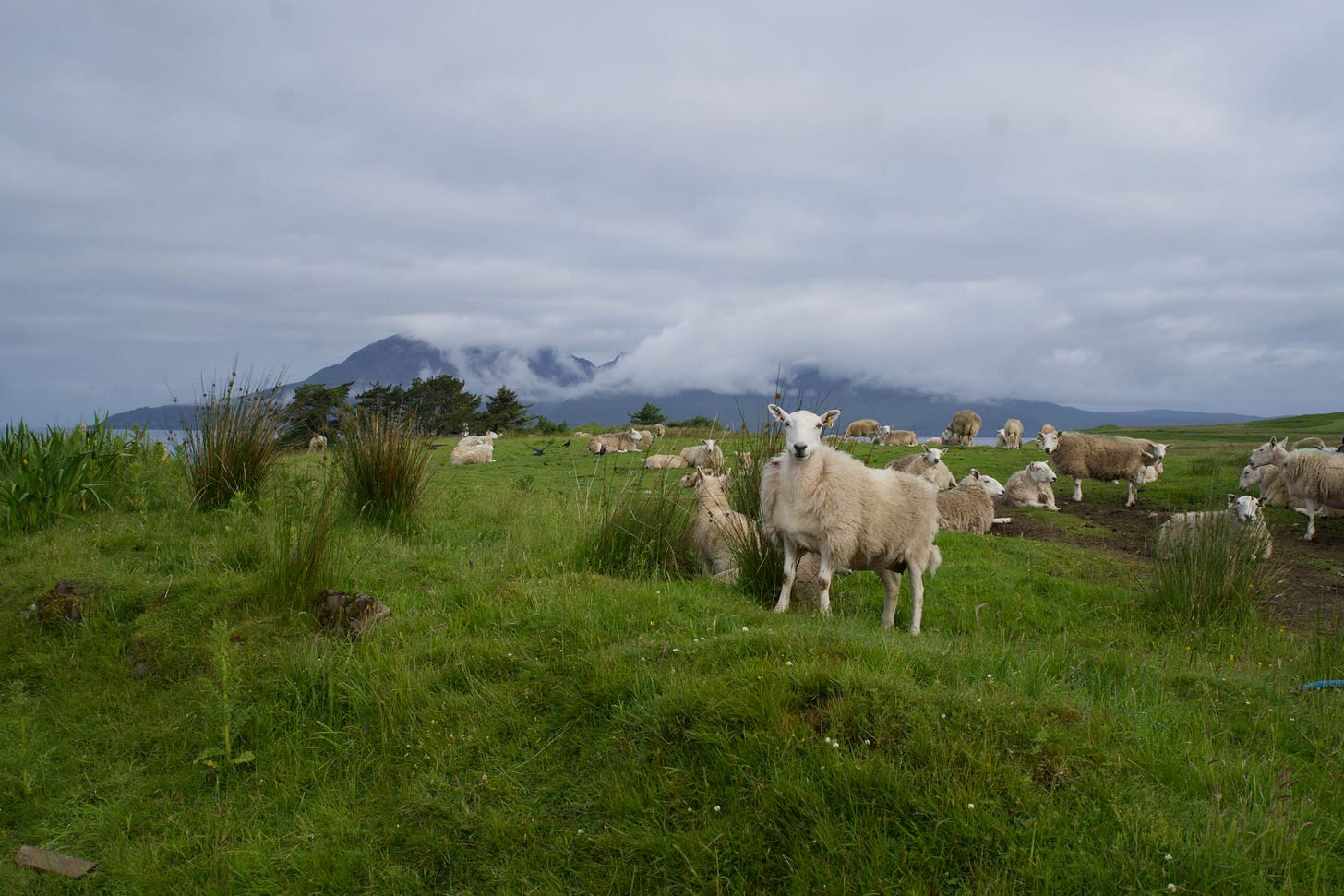
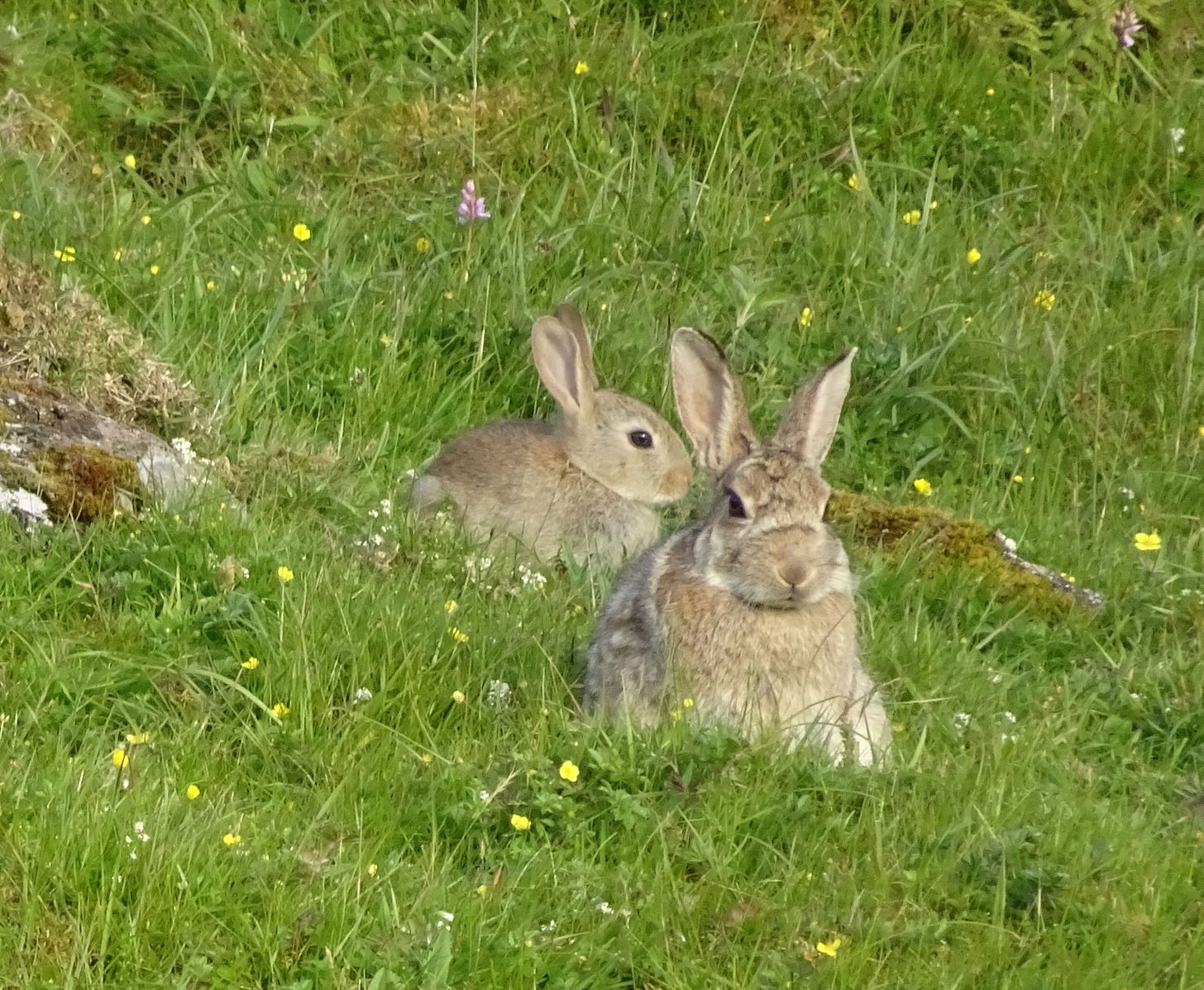
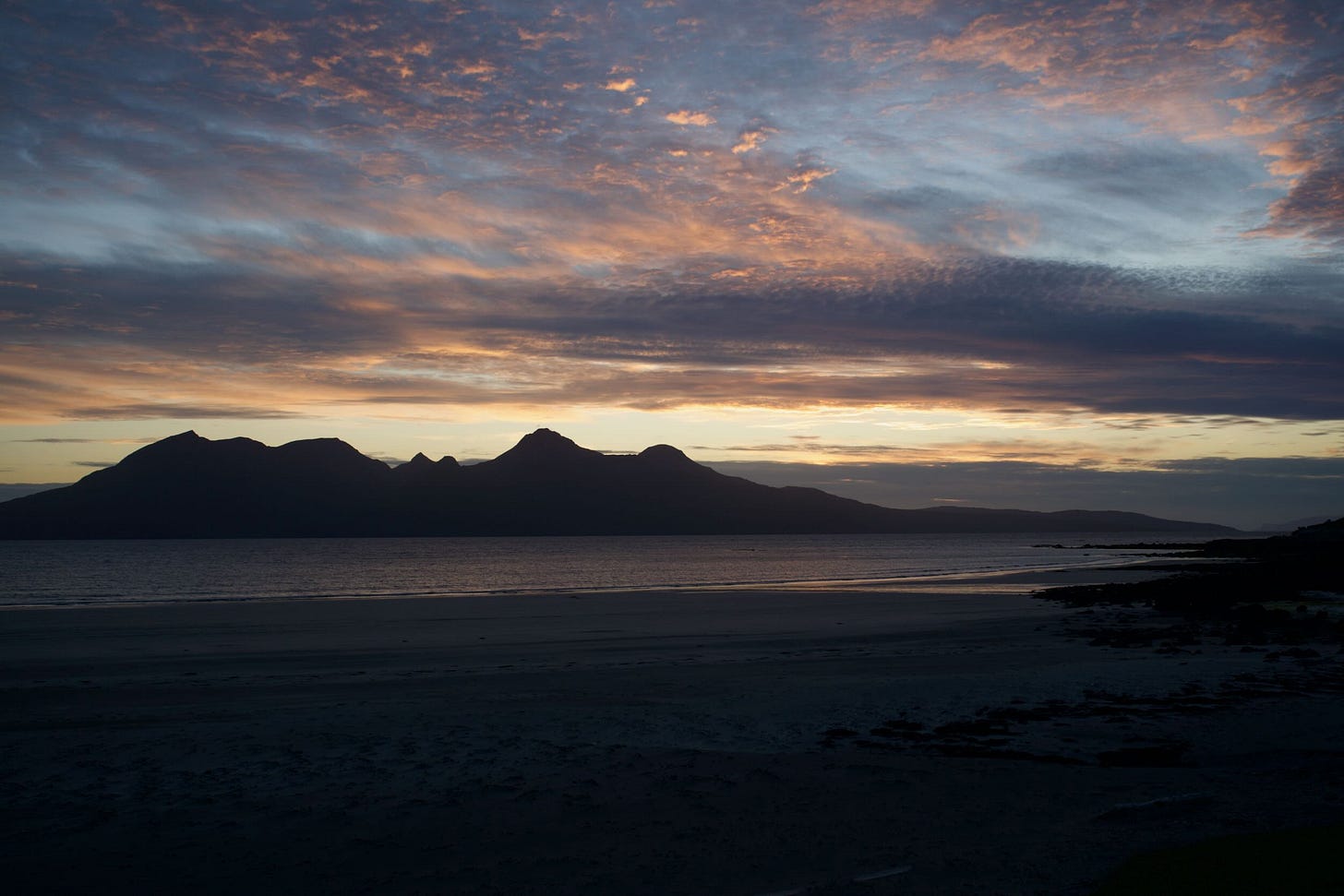
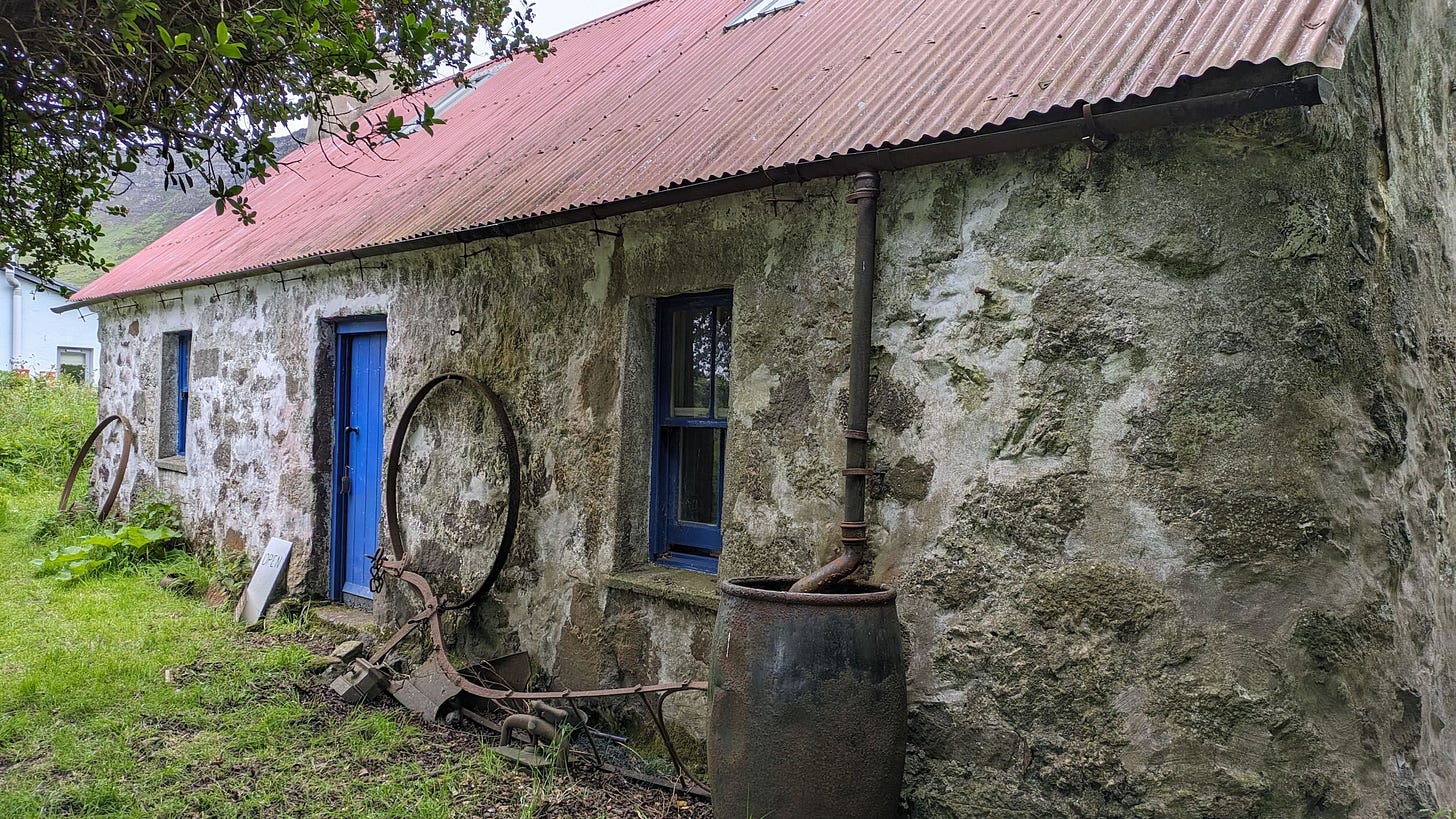
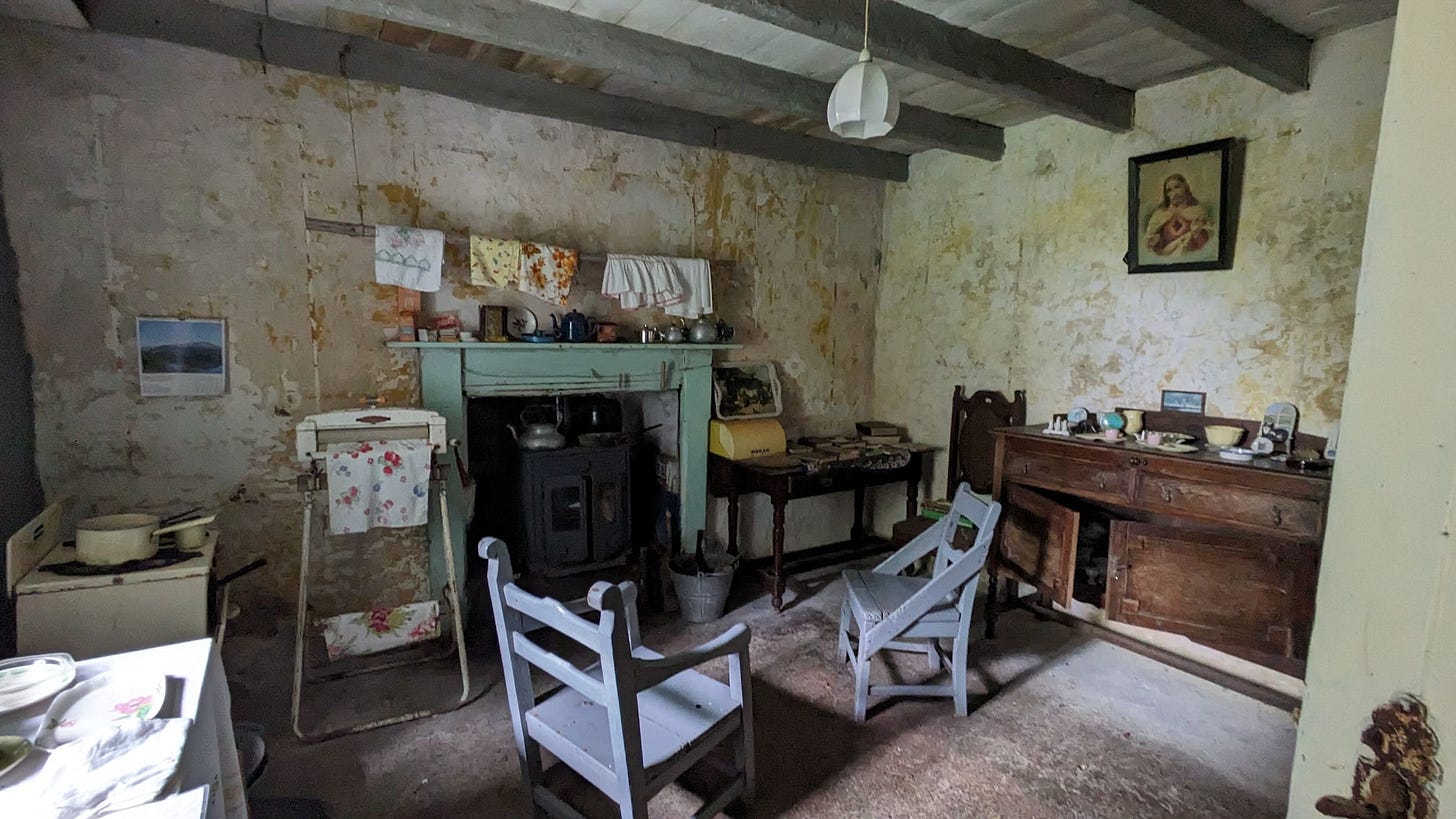
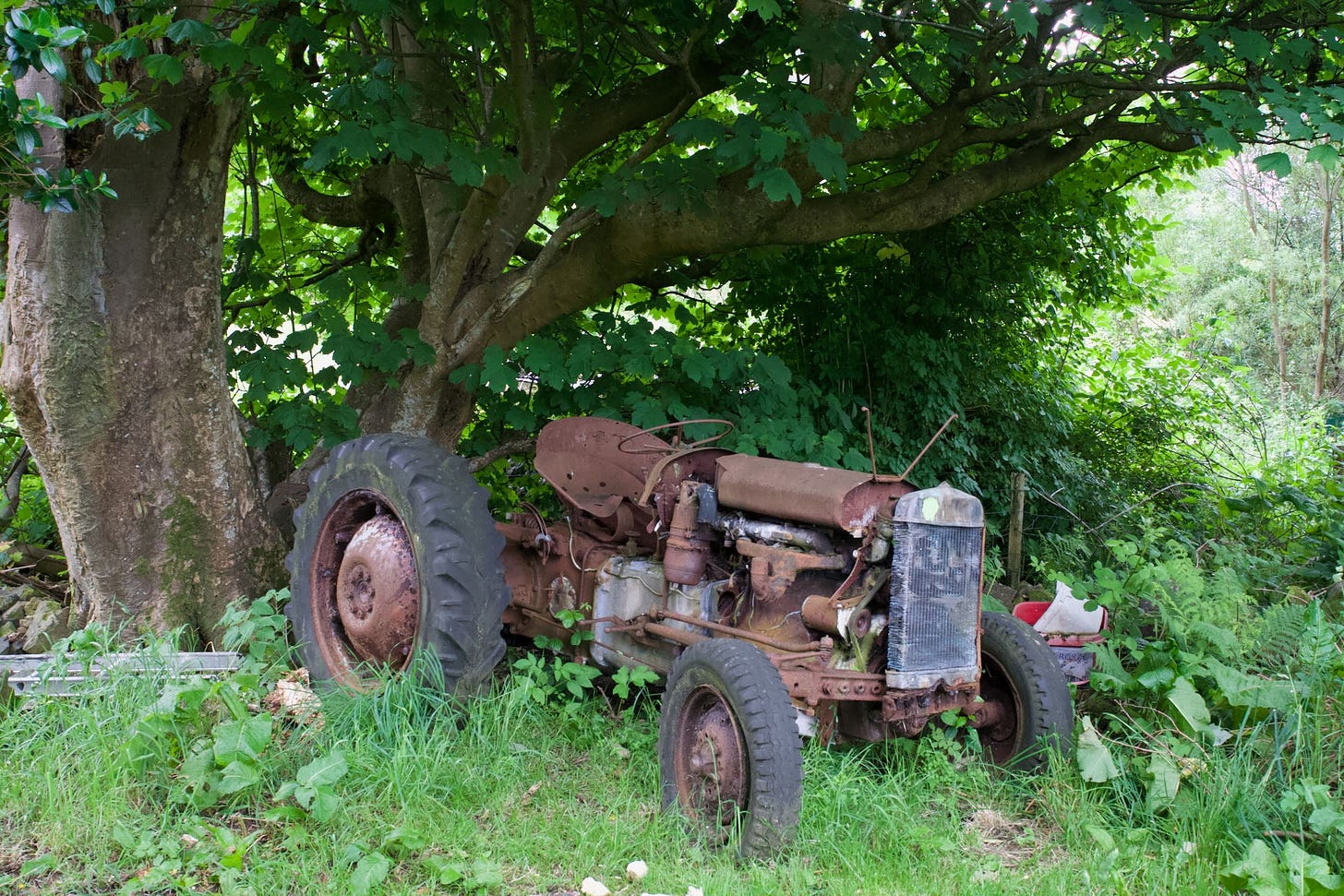
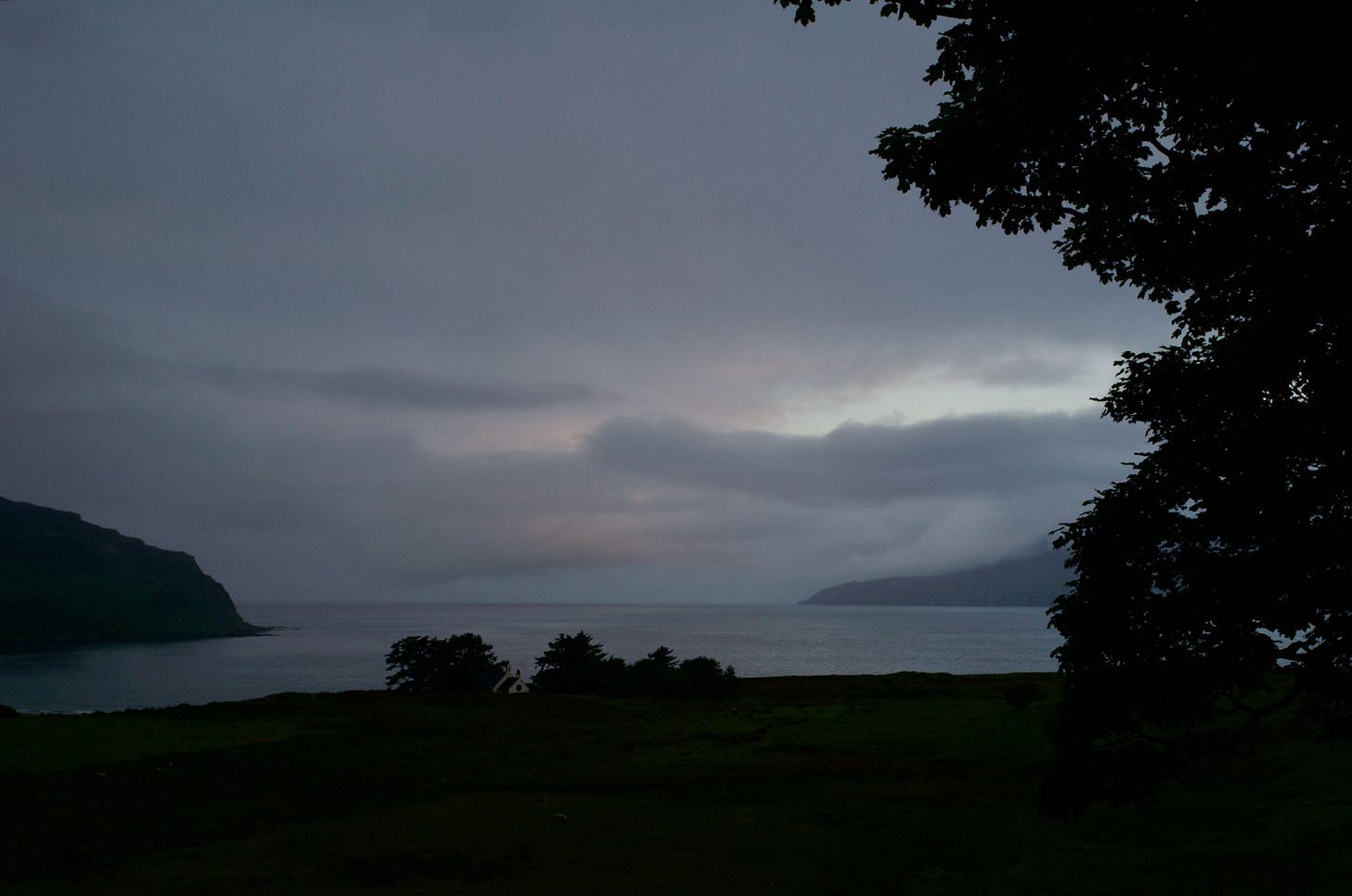
Another lovely chapter in the story of your trip to the Small Isles. Such beautiful photographs, and a description that is so calming as I read it on such a day of drama in the outside world! The sights and sounds of nature will have been truly memorable. Thank you, Kirsty.